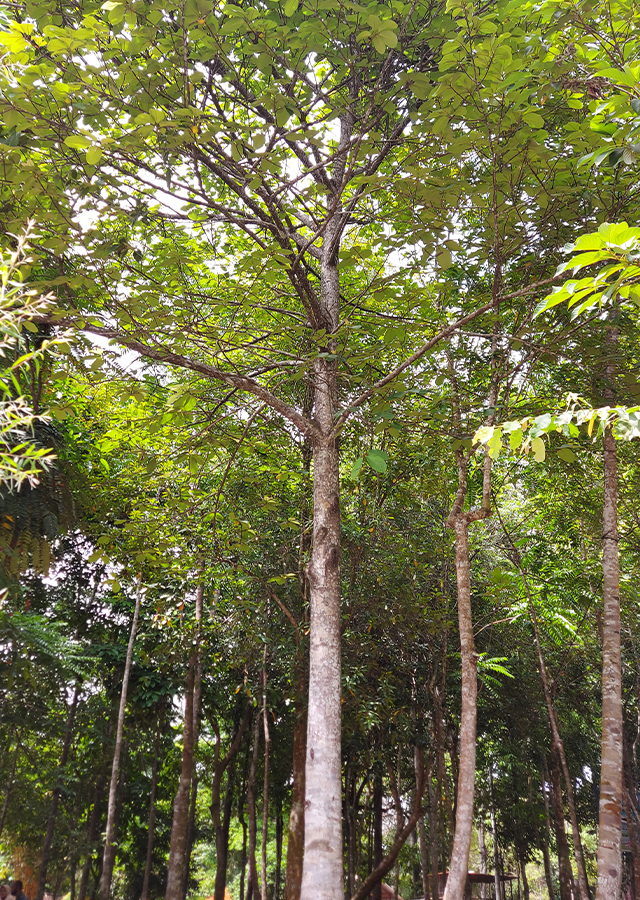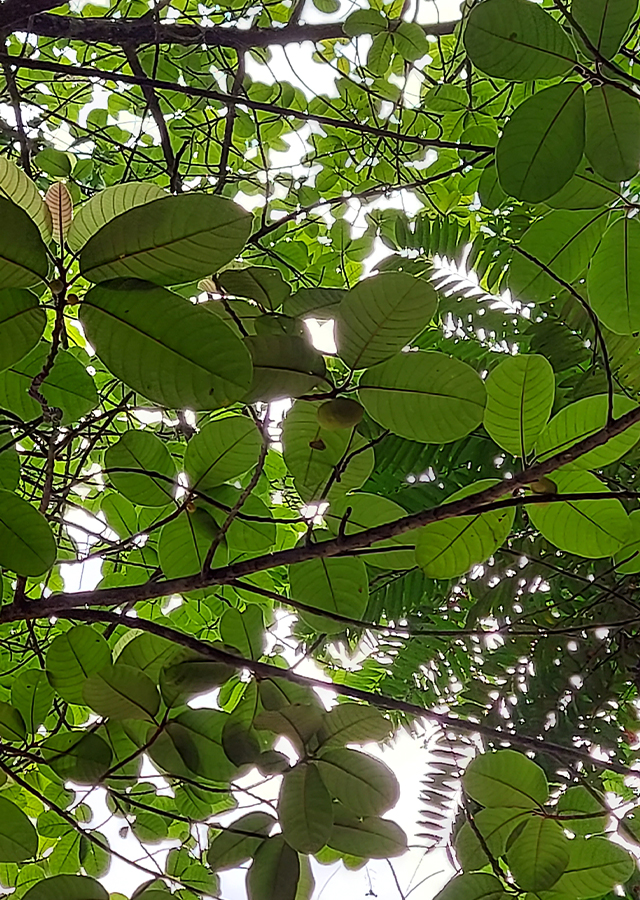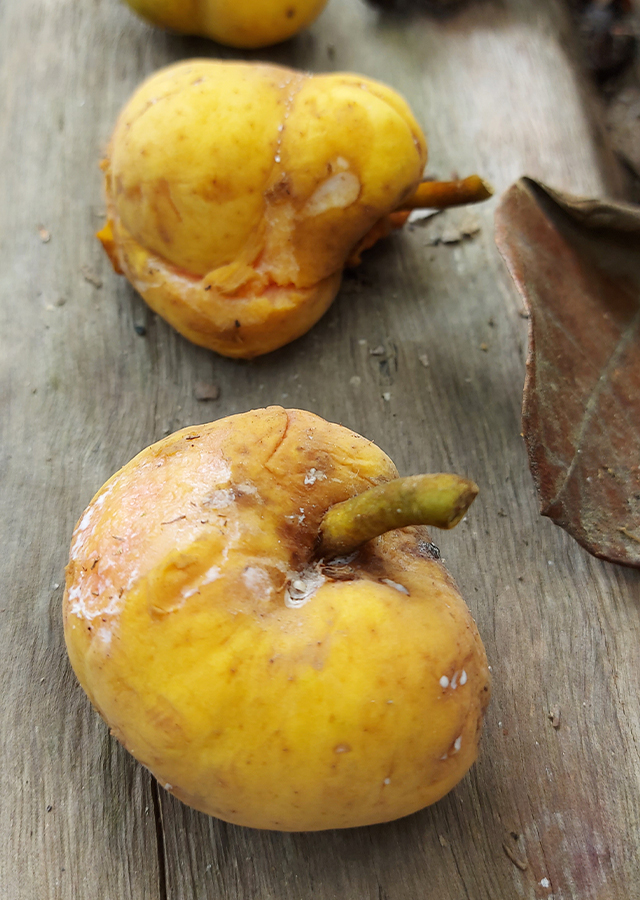Monkey Jack
Artocarpus lacucha Buch.-Ham.
Moraceae
Location in our garden
Orchard



Synonym
Artocarpus benghalensis Roxb. ex Wall.
Artocarpus ficifolius W.T.Wang
Artocarpus lakoocha Roxb.
Habitus
Trees. Deciduous tree, growing 6-18 m tall
Part Used
Seeds
Bark
Fruit
Roots
Growing Requirements
Full Sunshine
Need Shade
Habitat
Forest
Overview
Monkey jack is native to the humid sub-Himalayan regions of India. Distributed to Borneo, Myanmar, Peninsular Malaysia, Singapore, Sumatra, and Thailand. The fruit is edible and has medicinal properties. Its hard wood is sold as lacuch, the same quality as teak. Sometimes it is also planted as an ornamental plant because it is shady.
Vernacular Names
Myankdok (Burmese), Monkey fruit (English), Badhal, Dephal, Dhau, Lakoocha, Lakuch (India), Green tampang (Singapore).
Agroecology
It grows in lowland hill forests, open countryside, and sometimes villages, up to an altitude of 100-1300 m. Grows best in areas of full light, deep permeable soil with a pH range of 5-6.5, and a temperature range of 22-32 °C.
Morphology
- Bark - dark brown; exfoliating in small round woody plate; inside reddish; softly fibrous with faint streaks of white latex; copious milkly latex.
- Leaves - oblong or elliptic-obovate, 4.7-11 in. (12-28 cm) long, 6-15 cm broad, scabrid, pubescent beneath, coriaceous, margin entire, apex acute or obtuse, lateral veins 6-14 on either side of midvein, petiole 0.4-1.4 in. (1-3.5 cm) long, stipules lanceolate, 0.4-0.6 in. (10-15 mm) long, hairy.
- Flowers - male flowers are small, elongated, orange-yellow and taste like tamarind; female flowers are reddish, borne on shorter and thicker peduncles, occur terminally and in leaf axils of new growth; both are borne on the same tree.
- Fruit - a syncarp, nearly round or irregular, 2-4 in. (5-10 cm) wide, velvety, dull-yellow tinged with pink, sweet sour pulp.
- Seeds - irregular in shape, varies in size, containing white sticky latex, and seed coat is white and thin.
Cultivation
Propagated by seeds, root cuttings and air layering. Seeds germinate best at 24-27 °C. The seeds germinate quite quickly. Seedlings are planted when they are about 20 - 25 cm high.
Chemical Constituents
Alkaloids, phenols, flavonoids, tannins and steroids.
Traditional Medicinal Uses
- The sap and juice of the bark are applied externally for boils, pimples, cuts and wounds.
- The root is astringent and is also used as a laxative.
- Macerated bark is used as a poultice to treat skin diseases.
- The bark is used to treat headaches and wound.
Part Used
Reference Sources
- Bishnoi, S.K., Shinde, R., & Sarkar, P. K. (2017). Monkey Jack (Artocarpus lakoocha Roxb.): Hope for Sustaining Livelihood. In: Dutta, A. K. and Mondal, B. (Eds.), Fruits for Livelihood: Production Technology and Management Practices Published by Agrobios (India), Jodhpur, India. pp. 199-213.
- Flora & Fauna Web. 2021. Artocarpus lacucha Buch.-Ham. https://www.nparks.gov.sg/florafaunaweb/flora/3/5/3571. 26 October 2021.
- Growables. 2020. Lakoocha, Monkey Jack - Artocarpus lacucha. https://www.growables.org/information/TropicalFruit/Lakoocha.htm. 26 October 2021.
- Useful Tropical Plants. 2021. Artocarpus lacucha. http://tropical.theferns.info/viewtropical.php?id=Artocarpus+lacucha. 26 October 2021.


